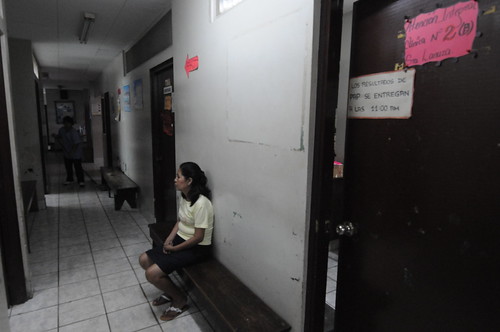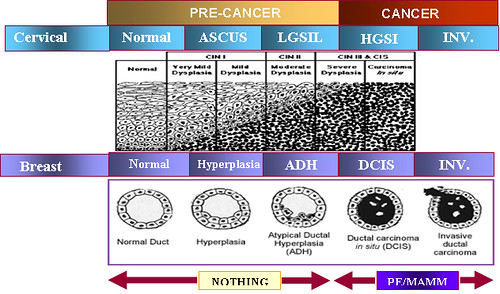
"How many ways of being there, friend?" asks the grandmother of growth in its heating mode. Feel it is a serious issue, and you fear that you will not know the answer.
"Between the yin and yang, between darkness and light, between normal and abnormal, there are infinite nuances and ways of being endless. Without lines, display and change, move or settle in any promotion of their welfare, some weaker. erosive A change is coming daughter. Howwe find it?
"The cells are changing in the cervix. They go faster, faster, faster, faster, too fast to be in order, too fast to be symmetrical, too fast to be ordered. How you can dance to the rhythm ? This detached from its moorings? set at the results? And freedom?
"The cells are changing too fast for the guards to meet;.? Where you been overwhelmed more help, dear niece who is drawn to help guard Will prevail andchange frequency if given reinforcements? Or you have to kill the guards along with cancer to stop the music and even music?
"His story is unique, my precious son. Your choices come from his deep well of inner wisdom. Trust yourself. Trust me. I'll hold your hand while dancing, will follow or lead, fast or slow, like. Come on! "
She actually has cervical cancer, or one of its precursors? This is an importantdistinction. Current practice tends to over-treat women with abnormal cells, hyperplasia, dysplasia and carcinoma in situ. In nine out of ten cases, if the carcinoma in situ of the cervix is left untreated, will never progress to cervical cancer.
"Doctors can monitor patients safely for [number and type of HPV] virus test currently available for several months before deciding the most aggressive treatment ...".
Cervical cancer in situslow overall growth, middle and regression without treatment over a period of 10-30 years for the development of invasive cancer. About 10% of women have a faster growth rate - the incidence may be increasing - is becomes invasive in one year. As cervical cancer is more common in women 40-60 years of age, but often occurs in women younger than 35 years.
In the U.S., nearly five million Pap tests each year reveal dysplasia, but of these, 45,000 are new cases Cervical carcinoma in situ and invasive cervical cancer will be 10,000. Cervical cancer kills more than 4,000 American women each year.
Black women in America are twice as likely to be diagnosed with cervical cancer and nearly three times more likely to die than white women. For years at diagnosis and the disease is more advanced, but are less likely to receive aggressive treatment.
> Cervical cancer is now known, is caused by infection with certain strains of HPV. A healthy immune system can prevent this, a child can not. That is why cervical cancer is strongly linked to lack of fitness facilities, lack of vitamin C intake (less than 30 mg per day increases the risk seven times), lack of carotene in the diet (in IU daily risk Triples 5000), snuff consumption (three times the risk), the first report of the first 18 years (triple the risk,cervix is immature and more easily damaged and infected), the long-term use of oral contraceptives (more than 8 years quadruples the risk), more sexual partners (more than 5 Quad risk), and a monogamous relationship with a man who is uncircumsized and has had more than 25 members.
Is inflammation of cervical cancer? Women whose cervical tissues infected with HPV and pain - herpes, gonorrhea, chlamydia, spermicides [and violent] Penetration - are twice as likely to be diagnosed with cervical cancer than women who have HPV, but not the inflammatory events.
Some procedures such as diagnostic tests to play. Cone biopsy, despite its name, is a surgical procedure itself.
"The feelings of being raped or associated with chronic vaginitis, vulvar pain, chronic and recurrent warts, herpes, cervical cancer, Pap tests and related abnormalities (cervical dysplasia)."
Back your power! Ask yourcervical cancer and genital like yours. Owning your cervix. Accept it, but love; guard. When you reject a part of ourselves, we can find ourselves "losing", which begins with surgery.
Compared with women with other cancers, women with cervical cancer are more likely to be sexually unhappy. You may not like sex, but believe they should do, and are often not orgasmic in the presence of a man. They are more likely to be divorced, separated, abandoned or"Black" in a relationship with a man who is unfaithful, unreliable, or alcohol.
Women with cervical cancer is low or deficient in a number of nutrients, including vitamins A, B6 (pyridoxine), C, folate (folic acid), and selenium. Increase consumption of vegetables, orange and green, whole grains, cabbage, selenium-rich foods - such as seaweed, garlic and mushrooms - and pyridoxine-rich foods - such as lentils, broccoli and potatoes no " cure "cancer. high-quality nutrition, however, are the basis of normal healthy cells to replace those that are carcinogens, and activates the immune system to eliminate aberrant cells.
Berry extract common privet (Ligustrum vulgare, L. lucidum) has been shown to inhibit cervical cancer in mice. Although not directly eliminate cervical cancer, privet is pleased to help reduce inflammation, increased white blood cells and nourish the immune system.
Milktincture of milk thistle seed is ideal for those who choose complementary medicine chemotherapy. And this amazing plant can be large cancer, too. Two alkaloids, silymarin and silibinin, reduce the growth of breast and cervical cancer prostate cells.
Castor oil is the classic treatment of cancer of Edgar Cayce. In the case of cervical cancer, Cayce recommended daily castor oil packs in the area of the uterus, and five drops of castor oil orally atgo to sleep. In severe cases, added Atomidine and glyco-thymol in the scheme.
Low levels of folic acid are associated with the development of cervical cancer, perhaps because folate is required for DNA repair. But no study has shown that supplementation, even at very high doses, can be reversed.
Similarly, low levels of carotenoids in the diet and in the blood increase the risk of invasive cervical cancer, but supplements are not a cure, and may also prolongprecancerous cells, which helps tumors grow. Studies have repeatedly found that beta-carotene "reduce spontaneous recovery." Women with CIN II, who took beta carotene were more than twice as likely to progress as the controls were.
High doses of vitamin C does not help either, and may be harmful.
Smoking causes a tumor suppressor gene to lose its ability to kill cancer cells UCLA second cervical - cancer researcher Dr.Christine Holschneider. Perhaps for this reason that women who smoke are more likely to have cervical cancer and more likely to die from it, too. It is time to move to a herb smoke? Make your own coltsfoot, mullein, mint, and a touch of snuff.
From 1938 to 1971, more than six million unborn children in the United States have been exposed to similar potent estrogen diethylstilbestrol (DES or desPLEX) when the drug was prescribed by their mothers in the mistaken belief thatcould prevent miscarriage and create larger, stronger children. Although studies from 1954 found the opposite to be true - the women who took DES were more likely to have an abortion - this dangerous drug continued to be administered to pregnant women for 15 years.
DES daughters and sons have malformed reproductive system, immune system and increased sensitivity to carcinogens. DES daughters and grandchildren are especially likely to be diagnosed rapidly growing clear cell cervical intraepithelial neoplasia or adenocarcinoma of the cervix or vagina. Although many DES daughters were diagnosed when they are young, it is the age when the threat disappears.
DES daughters and grandchildren, to my knowledge have remained free of cancer with emphasis on healthy living and regular infusion of red clover flower (1-3 quarts a week) and tincture of burdock root (one dropper day, more when stressed).
"... Some types of cancer such as early breast> Cancer of prostate cancer, cancer of the cervix and low grade lymphomas respond well to herbal treatments, but it seems to be aggravated and sometimes aggravated by surgical procedures or other conventional treatments. "
rates of cervical cancer is four times less than women whose partners had a vasectomy. Of course, once you have cancer of the cervix, this intervention is too late.
Women who douche four or more times a month were nearly four times more likely to be diagnosed with cervical cancer. douching is not a way to clean the vagina? Of course not. The vagina contains beneficial organisms (most bacteria), which prevent the infection and can prevent cancer, douching, washing, leaving the cervix and vagina vulnerable.
A cone biopsy is real surgery, not just a biopsy. E 'was originally conceived as a method for preserving the uterus for women with cervicalCancer> that usually by the desire to have children, were reluctant to undergo a hysterectomy. A cone biopsy requires anesthesia and is designed not only to cells of the sample test for cancer, such as a biopsy, if it were to remove all cancerous tissue as possible to the cervix with a clear margin of tissue intact.
During the treatment of cervical carcinoma in situ is common. Except in the rare case of rapid growth of micro-invasive cancer, is considered safeexploring alternative treatments for 3-12 months before consenting to surgery. A high percentage of tumors in situ of the cervix can be reversed.
Disclaimer: This content is not intended to replace traditional medical treatment. All suggestions and all herbs listed are not intended to diagnose, treat, cure or prevent any disease condition or symptom. And the use of personal information should be provided by a clinical herbalist or other qualified health professionalwith a specific formula for you. All materials contained in this document are provided for general information purposes and should not be considered medical advice or consultation. Contact a reputable healthcare provider if you need medical attention. The exercise of self-empowerment is seeking a second opinion.









